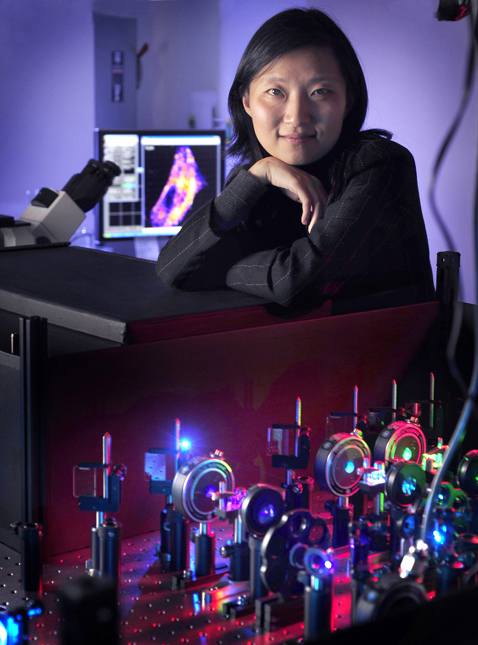 Xiaowei Zhuang, PhD |
Xiaowei Zhuang, PhD, will present Nanoscopic Imaging of Biomolecules and Cells with Single-Molecule and Super-Resolution Fluorescence Microscopy, the 13th Fred Fay Memorial Lecture on Monday, Sept. 19, at 3 p.m. in Amphitheatre I. A reception will follow in the Faculty Conference Room. The Fred Fay lecture is given annually in remembrance of the late professor of physiology and his scientific contributions, particularly to the field of biomedical imaging.
Dr. Zhuang, a Howard Hughes Medical Institute Investigator and professor of chemistry & chemical biology and professor of physics at Harvard, continues the tradition of highly accomplished Fay lecturers. She has received numerous awards, including a MacArthur Fellowship, a Camille Dreyfus Teacher-Scholar Award, the HHMI Collaborative Innovation Award, the Max Delbruck Prize in Biological Physics, and, most recently, the Raymond & Beverly Sackler International Prize in Biophysics.
The focus of Zhuang’s lecture is advances in imaging methodologies that break the diffraction barrier. She became interested in imaging as a postdoctoral fellow at Stanford University in the lab of Nobel laureate Steven Chu, PhD, where single-molecule fluorescence tools such as FRET (fluorescence resonance energy transfer) were used to study protein and RNA folding.
Since establishing her own lab, Zhuang and her research group have invented a form of super-resolution light microscopy called STORM (stochastic optical reconstruction microscopy) that uses a photo-switchable fluorescent probe to separate spatially overlapping images of individual molecules with an approximate 20 nm resolution. They have applied this methodology to examine a wide range of biological interactions, including protein interactions with nucleic acids, protein organization at neuronal synapses, and protein interactions during clathrin-mediated endocytosis. They have also developed real-time imaging methods to track viral entry into live cells, to follow the fate of individual virus particles, and to identify components of the infection pathway.
Notably, the lecture coincides with Zhuang’s two recent publications in Science: one on chromosome organization by a nucleotide-associated protein and the other on the circumferential motions of the cell wall synthesis machinery that drive cytoskeletal dynamics in the bacterium B. subtilis.
For additional information, contact lecture host Ann R. Rittenhouse, PhD, associate professor of microbiology & physiological systems, at 508-856-3735.